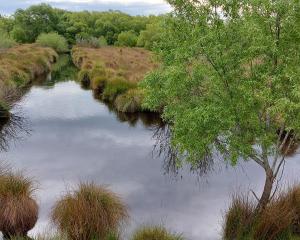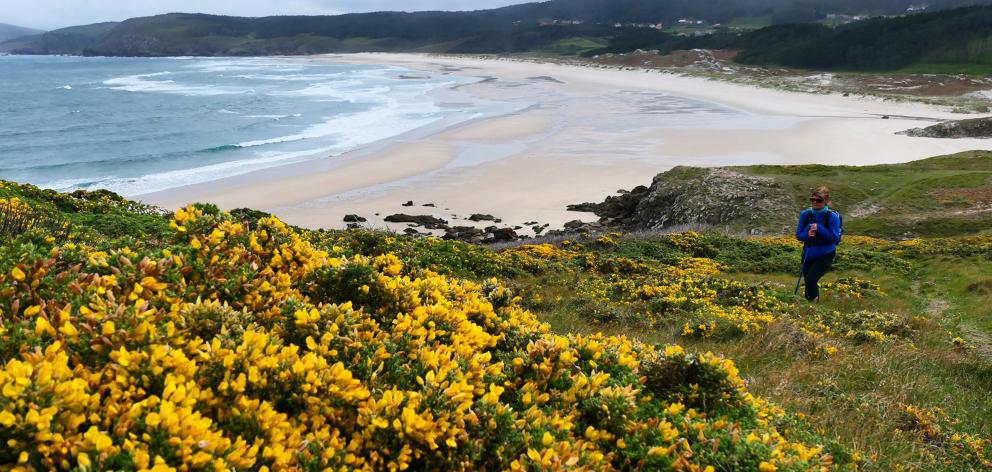
Serendipity - an unexpected delight - is the word that comes to mind when describing the seven-day tramp my wife and I recently did on the wild and undeveloped northwest coast of Galicia, Spain.
Simply put, anyone who is adventurous, loves travelling to Europe and is fit enough to do 16km walks should seriously consider doing this tramp.
Before this experience, I had never heard about On Foot Holidays' programmes that allow trampers to go at their own pace, with maps and detailed instructions, but without a guide or other travellers, while still enjoying a high level of local support.

The company offered 10-day, seven-day or five-day routes, so we opted for seven days, which proved to be the right amount of time and distance for us. Afterwards, my wife and I agreed that this unique experience is one that we will always remember and treasure.
So what made it so special?
Organisation: On Foot Holidays provided us an extensive pre-trip package containing a custom-written guidebook about the region and our tramp, a set of detailed trail descriptions and maps for each day's route. In addition, they booked our lodging each night and arranged for a taxi to take our baggage to the next destination, so all we had to do was carry our daypack essentials.
Each day we texted or spoke with the company's local expert, who was available in case of emergency but whose main function was to keep us informed about the daily weather forecast and to make special taxi arrangements when we opted to shorten a couple of 23km days to less than 16km (a very nice and much appreciated option since my feet protested going more than 16km). We found that the cost was very reasonable considering the meals, lodging and transportation that the company provided.
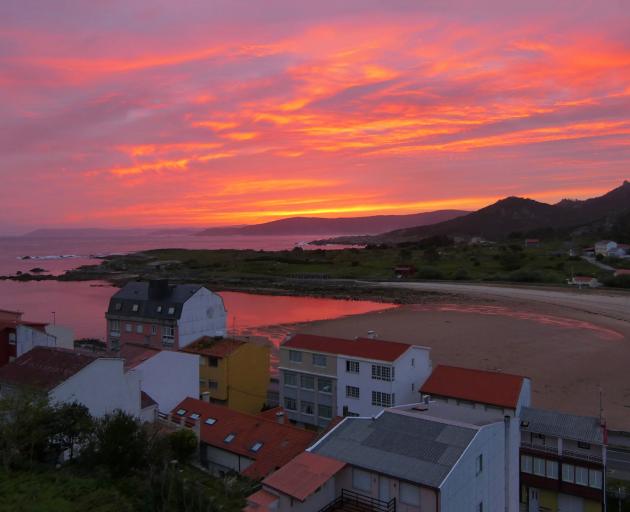
One of our hikes followed a narrow trail along a steep, rocky cliff overlooking the steel-blue waters of the Atlantic Ocean that thrashed against jagged rocks 60m below us. We stopped to picnic and watch the only living things we saw that whole day: a herd of goats above us, and a group of dolphins cavorting in the waves below. In the distance, many of the mountain peaks sported gleaming wind turbines like candles on a cake.
Later, that same trail led across a 3km-long, curving sandy beach with nary a soul, nor structure, in sight before leading onwards through rich farmland. Before long, we stopped at a small village cafe that served Estrella Galicia beer and freshly baked bread with cold cuts for less than $NZ5. While we did get lost briefly a couple of times, in general the instructions were adequate, and the trails were amply marked with the official ``Camino dos Faros'' green dots, arrows or little feet pointing the way.
Sights and sounds: During our mid-May journey, the profusion of flowers delighted us as we admired the intricate designs and colours of stately, purple foxgloves, dazzling yellow gorse (the spiny national flower of Galicia, covering entire hillsides), white daisies and countless others. The ocean, however, was the star of the show. I felt diminutive in the presence of the Atlantic's powerful swells, which rolled towards the shore in a steady procession from some unseen place, cresting and breaking with a ferocious intensity.
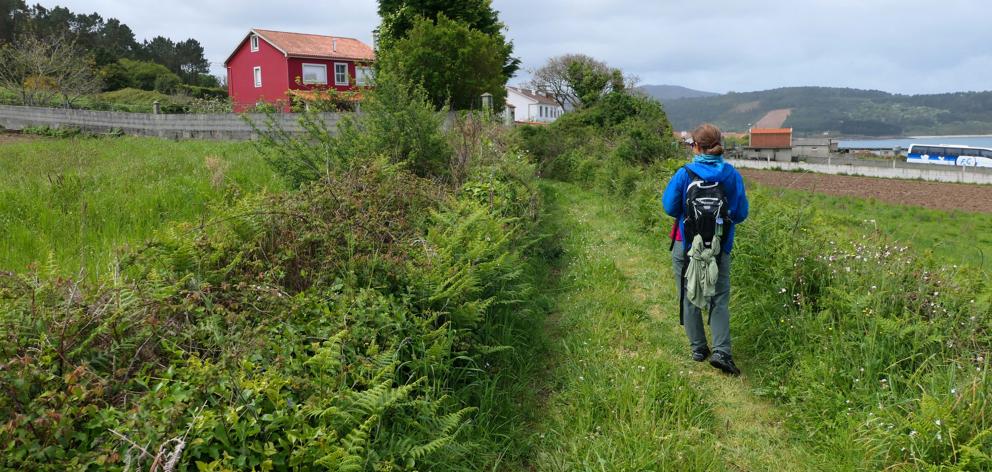
Silence and solitude were the hallmarks of each day's sojourn. The only sounds we heard were birds chirping, the wind blowing through trees or the waves breaking against the shoreline. The air was clean and the temperature brisk, with frequent intervals of cloudy, cool, windy and rainy weather interspersed with glorious bursts of sunshine. There was remarkably little litter, the exception being spots along the shore where ocean currents deposited mostly fishing items.
People and food: Staying in pleasant small towns and villages that we would have never otherwise visited made our tramp extra special. We noticed that virtually all homes were well kept and neatly painted, mostly in shades of white with some in baby blue, light green or yellow hues that blended with their red tile roofs. While walking past rural homes, I was intrigued by the striking Galician rectangular stone structures, called horreos, perched on top of mushroom-shaped stone pedestals, used for centuries to store grain for livestock during winter months.
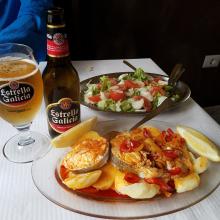
While Galicia is famed for its seafood, the menus focus mainly on octopus, various types of shellfish and their coveted delicacy, barnacles. The local beer was good, but we relished the ubiquitous fresh breads and cheeses. In the morning, we always had freshly squeezed orange juice; one of our hosts claimed that the juice wasn't as good unless it was hand-squeezed. Being a fan of white wine, I was happy to find that the majority of local wines were white varieties that tasted great and cost between $5 and $10.

Coming from around the world, most of them appeared to be over 50 and had walked an average of 800km to reach that holy place. As small groups of hikers reached the main plaza of Santiago's ancient cathedral, they often cried, hugged and took lots of photos of themselves with their large backpacks, worn hiking boots and walking staffs. A day or two in Santiago is a must.
Most of the pilgrims I spoke to said that walking the Camino had changed their lives in profound ways. What I realised on our much shorter hike was that I could allow myself to slow down, appreciate the beauty around me and let go of the urge to power walk from point A to point B. My wife and I realised that we, too, are pilgrims searching for meaning, awareness and joy on our journey through life and our Galician hiking experience had moved us further down that path in ways we won't forget. - TNS
Doug Hansen is a California-based travel writer and photographer.












